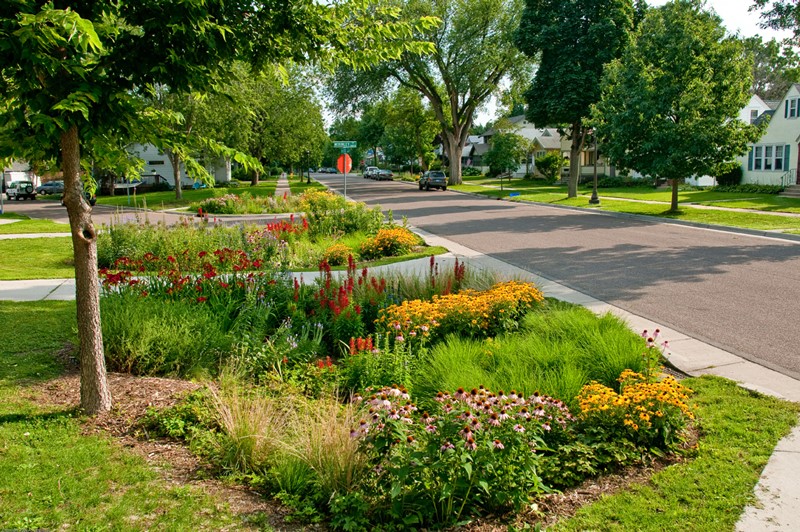
Response to Written Questions
From the RFP for the Five-Year Assessment of the Root River Watershed One Watershed, One Plan Implementation
Q1:
Would the RR 1W1P Partnership consider an HSPF-SAM approach for the Five-Year Assessment of the Implementation of the RR CWMP?
A. The RR 1W1P Partnership would not consider utilizing only HSPF-SAM for the Five-Year Assessment; as PTMApp was used for the development of the Root River Comprehensive Watershed Management Plan, the group would like to continue utilizing PTMApp for the Five-Year Assessment.
Q2:
We have a vision for how this process should be completed and are wondering if you could share your budget so we can determine if our vision aligns with you expectation for this level of effort.
A. The RR 1W1P Partnership proposes a budget of a minimum of $25,000 but no more than $50,000 for Consultant work on the Five-Year Assessment.
Q3:
To what degree will the deliverables for this five-year assessment be reviewed and approved by BWSR? Does the Planning Team have final say in what this assessment looks like or will there be coordination, review and approval by BWSR and if so, who at BWSR will be most directly involved in this effort?
A. There is no approval process through BWSR for the Five-Year Assessment. RR 1W1P Plan Content Requirements include a process for completing a Five-Year Assessment/Evaluation of Implementation efforts. The Root River CWMP currently has a section committing to this Five-Year Assessment. BWSR has developed guidance/recommendations on this assessment work (Attachment D in the RFP) but there is no BWSR requirement on how this is to be completed and what the final product looks like. The RR 1W1P Partnership will have the final say in what the Five-Year Assessment will look like.
Q4:
We noticed that the following bullet from BWSR’s guidance is missing “Identify ongoing challenges and document partnership success”. Was this intentional or does the Planning Team want this component of the evaluation process to be included?
A. The upcoming PRAP assessment will be covering a majority of the bullet in BWSR’s guidance document referencing “Identify ongoing challenges and document partnership success”, therefore, the RR 1W1P Partnership is not including it in the work for the consultant. The consultant will be able to use PRAP results as part of the Five-Year Assessment work.
Q5:
Can you clarify what needs to be completed by the PRAP deadline of April 12th?
A. The April 12th, 2023 deadline for the PRAP is for completion of the CWMP Progress Table (attached at the end of this document).
Q6:
Who is going to be the interface between the PRAP process and the Consultant Team selected for the five-year assessment?
A. Jenny Mocol-Johnson (jennifer.mocol-johnson@state.mn.us) and Adam Beilke (adam.beilke@state.mn.us) with BWSR will be the main contact for the PRAP process.
Q7:
Has the Root River Watershed PTMApp been updated to the newest version of PTMApp? If not, which version be used for this assessment?
A. PTMApp is currently being re-run for the plan area and it will be the latest version of the toolbar with NRCS practice types and the updated economic information. This update should be completed sometime during the winter of 2022-2023.
Q8:
Have all implementation efforts that will be assessed as a part of this project been tracked?
Does tracked information include practice type, location, treated area, and pollutant reduction estimates?
Are the practice locations and associated information available in a GIS shapefile?
A. eLINK is currently the only place that projects have been tracked thus far; there will need to be additional tracking work completed for things outside of eLINK (for example, outreach). Projects entered in eLINK would include BMP type, location, size/treated area, and pollution reduction estimates. eLINK data can be made available as a shapefile. Once per year, BWSR posts eLINK data to the following site: https://gisdata.mn.gov/dataset/env-state-cons-bmp-locs. More data can be provided by BWSR upon request.
Q9:
Provide information as to the water quality monitoring that has been conducted in the last 5 years that needs to be evaluated for this assessment.
Do surface water quality monitoring locations align with the HUC 10 pourpoints used for pollutant reduction values as reported in the plan document?
A. Water quality monitoring in the Root River Watershed for the Watershed Cycle approach was last conducted in 2018 and 2019, with the assessment being completed in 2020. Monitoring locations were based upon State and Local needs and may not always line up with HUC-10 pourpoints. MPCA Watershed Pollutant Load Monitoring Network sites may line up with some HUC-10 pourpoints and provide recent, as well as long-term, monitoring data. MPCA is currently working on the WRAPS Update Report that summarizes changes in water quality to eight Root River subwatersheds. This report is expected to have a draft version available in December/January. Questions regarding the MPCA WRAPS Update Report should be directed to Emily Zanon at emily.zanon@state.mn.us.
Q10:
Will modeled reductions or actual monitoring results be used to evaluate improvements to water quality?
A. Most of the measurable goals from the Plan are based on tools/models which would require the modeled estimations to gauge progress, however, monitoring results are an important part of the Assessment work and should be considered by the Partnership to determine if the work being completed is achieving the overall resource goals, and deciding whether any course corrections are needed. The Five-Year Assessment needs to include whether new information requires any changes to priority locations, issues or activities through a future amendment to the Plan.
Q11:
Will all priority level (A, B, and C) resource concerns be evaluated or just a subset of concerns?
A. The Five-Year Assessment will focus on all of the A and B level resource concerns.
Q12:
What is the budget or range of available budget for this project?
A. The RR 1W1P Partnership proposes a budget of a minimum of $25,000 but no more than $50,000 for Consultant work on the Five-Year Assessment.
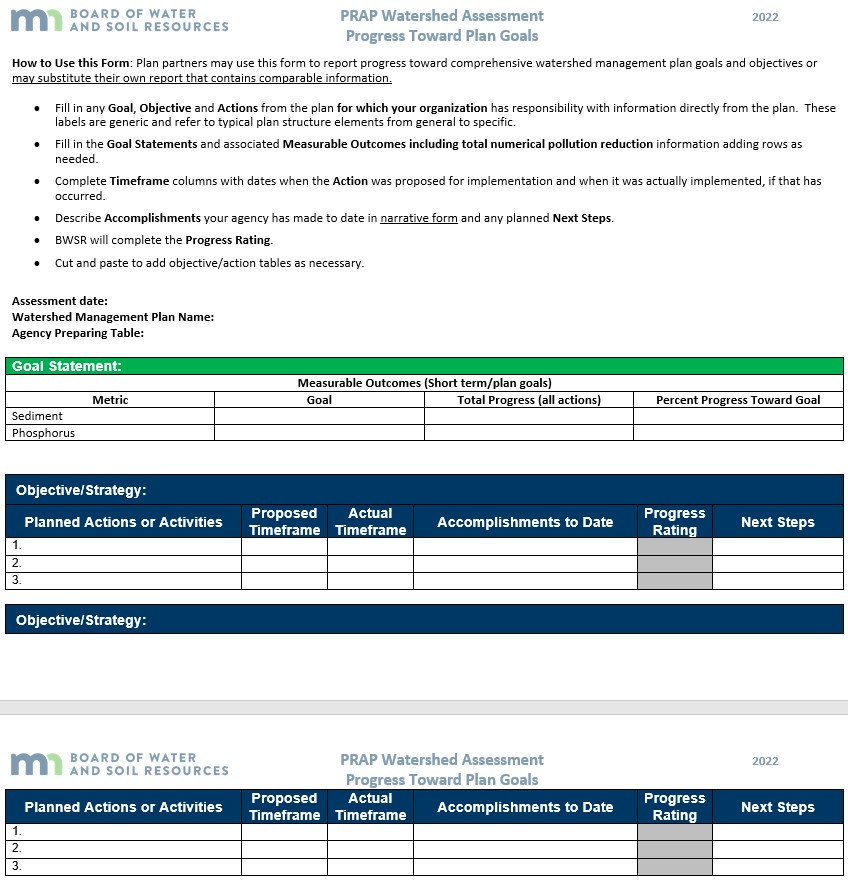

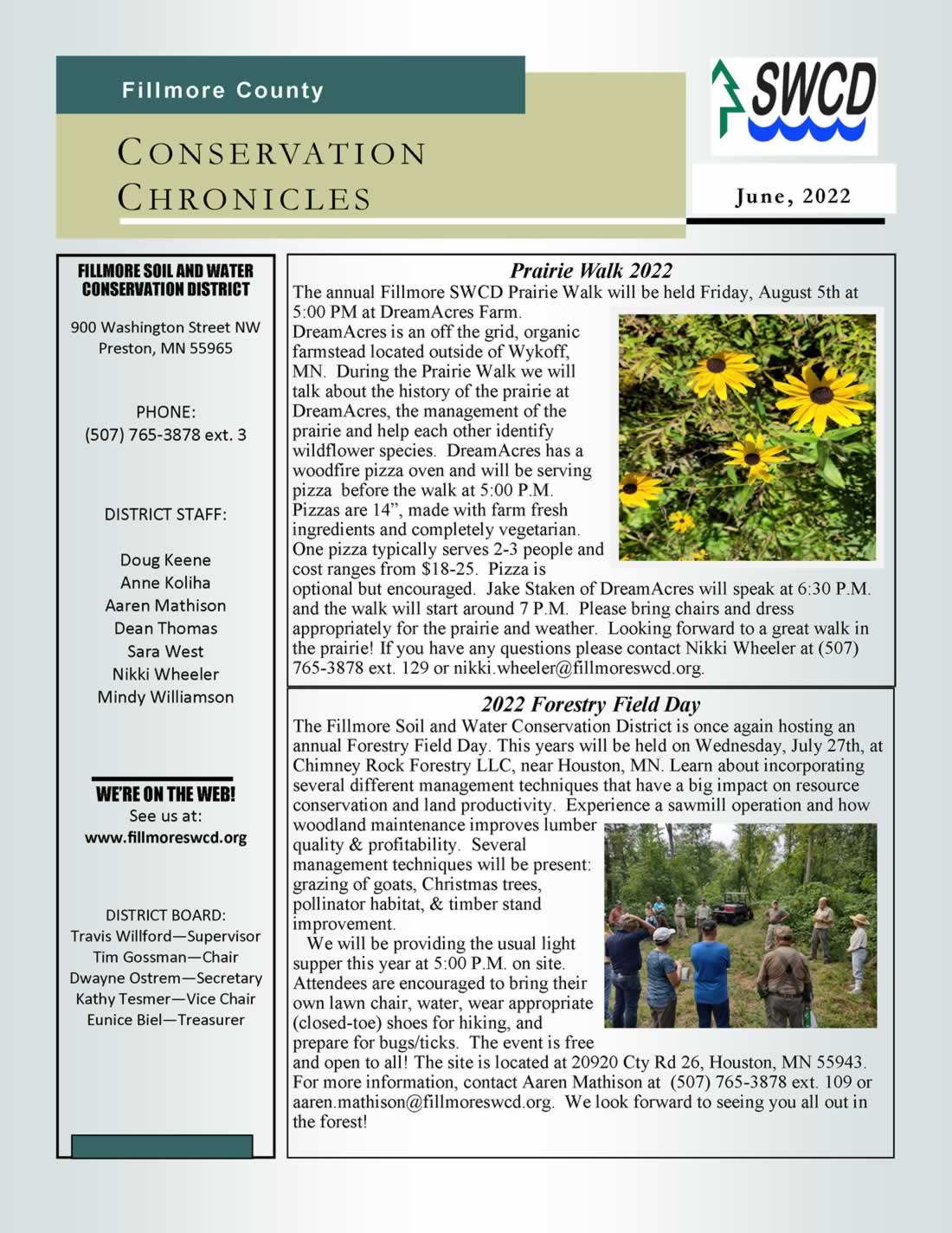
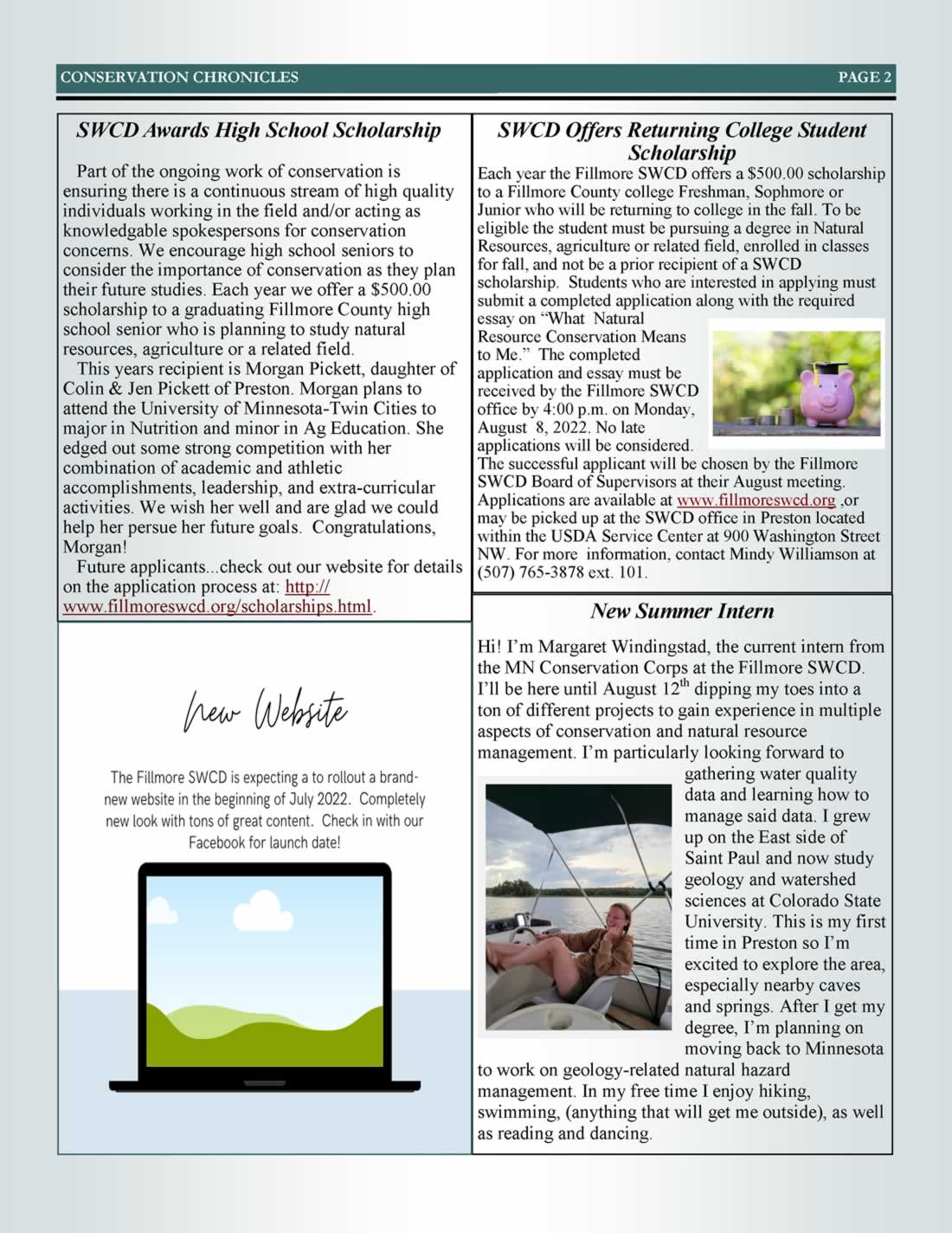
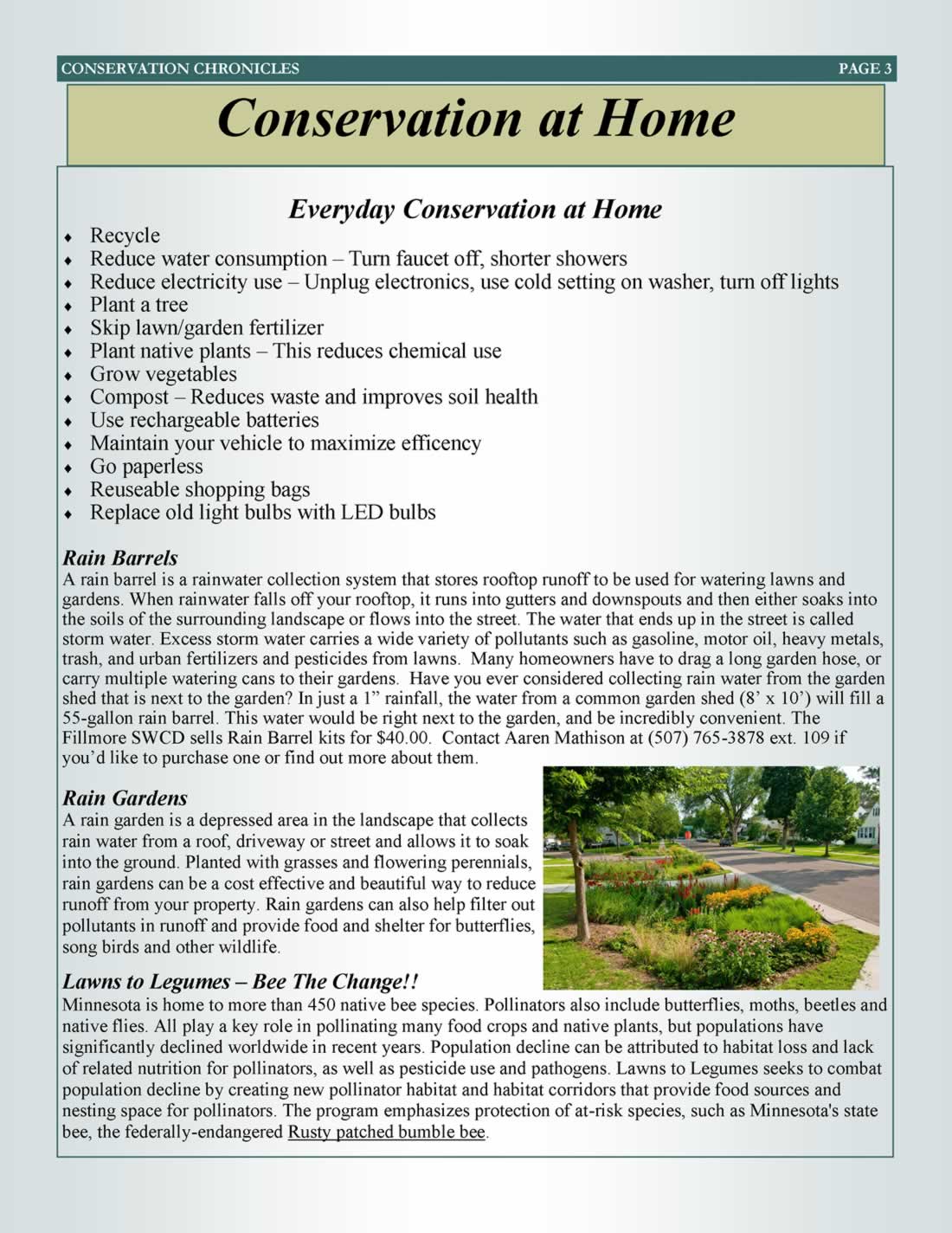
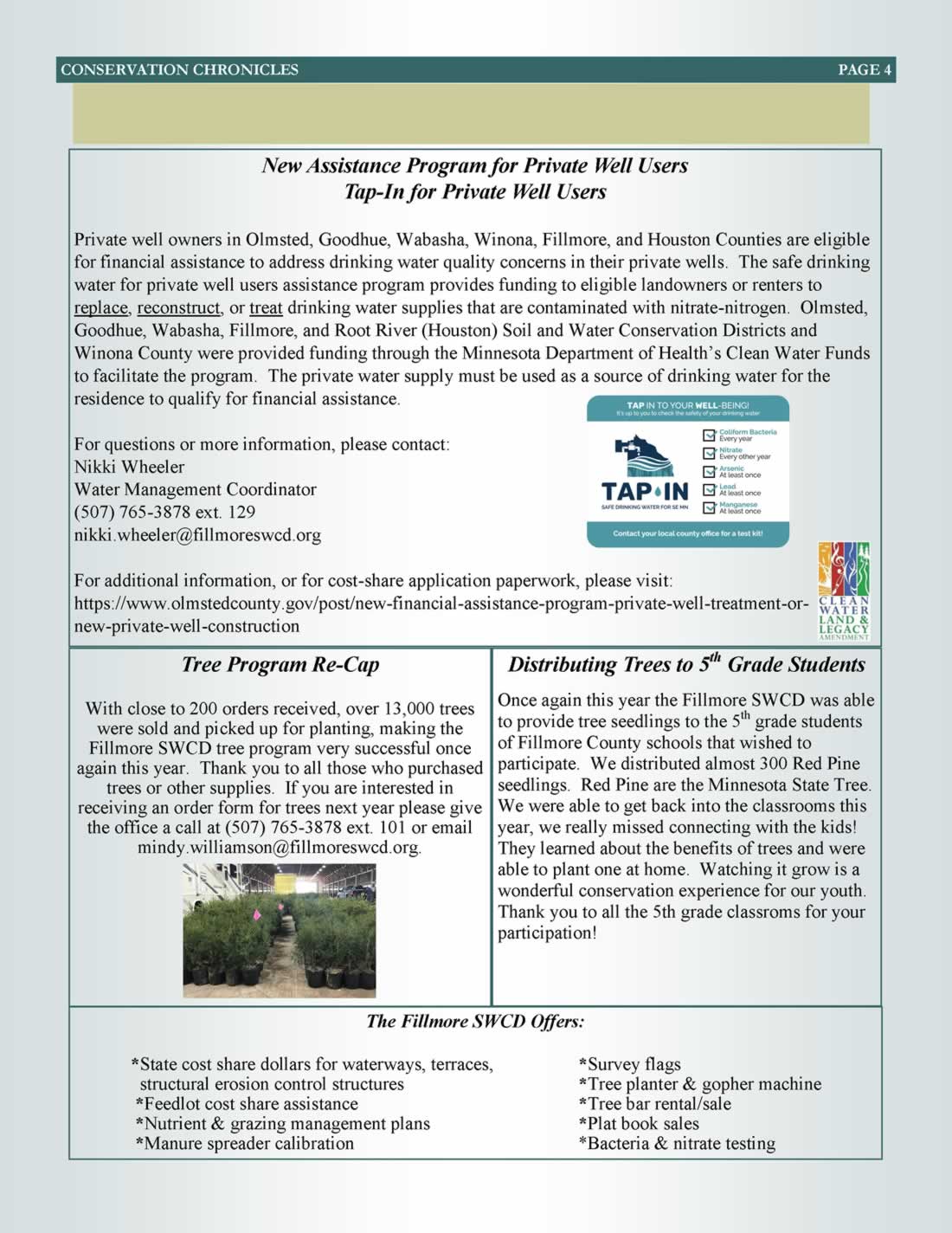
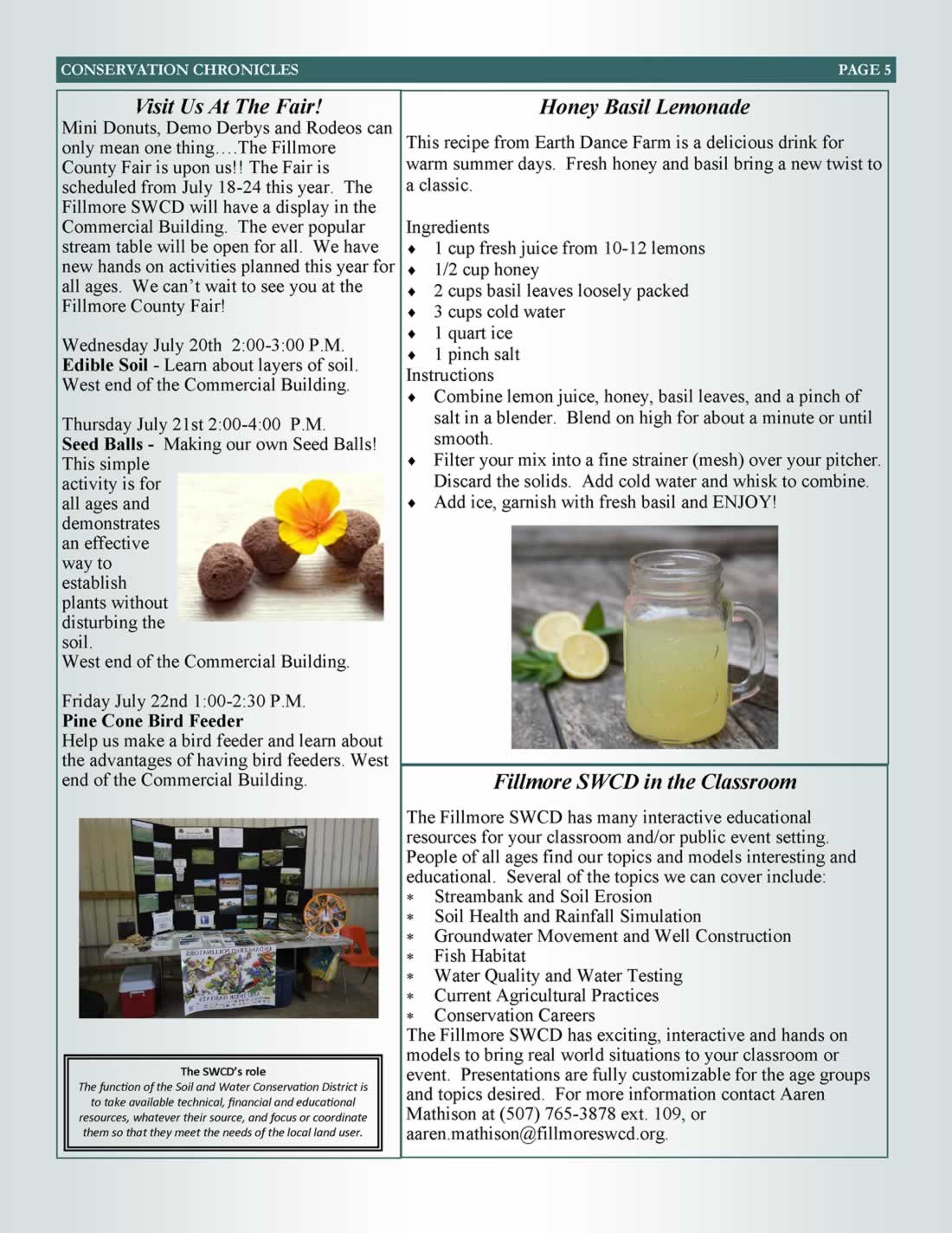
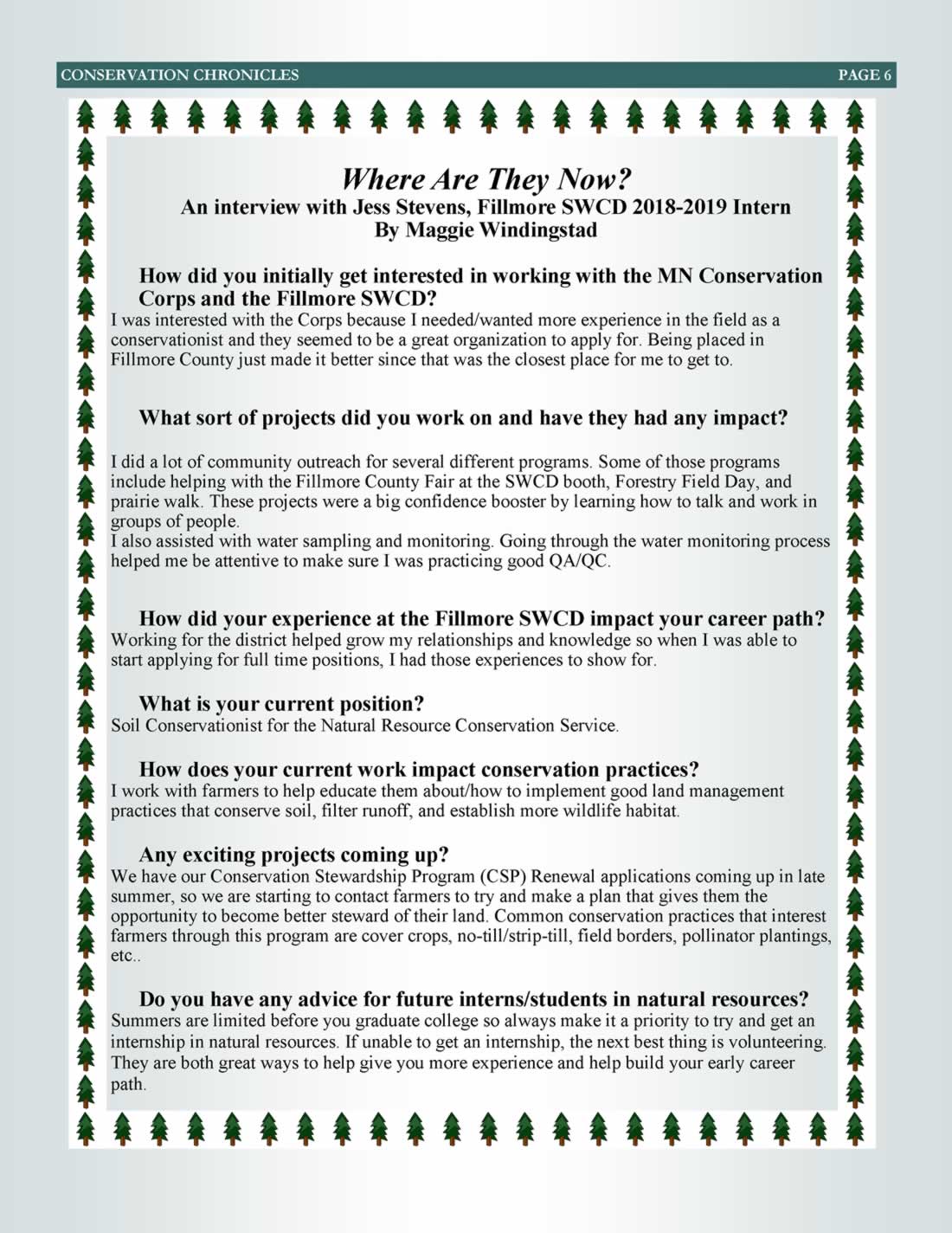
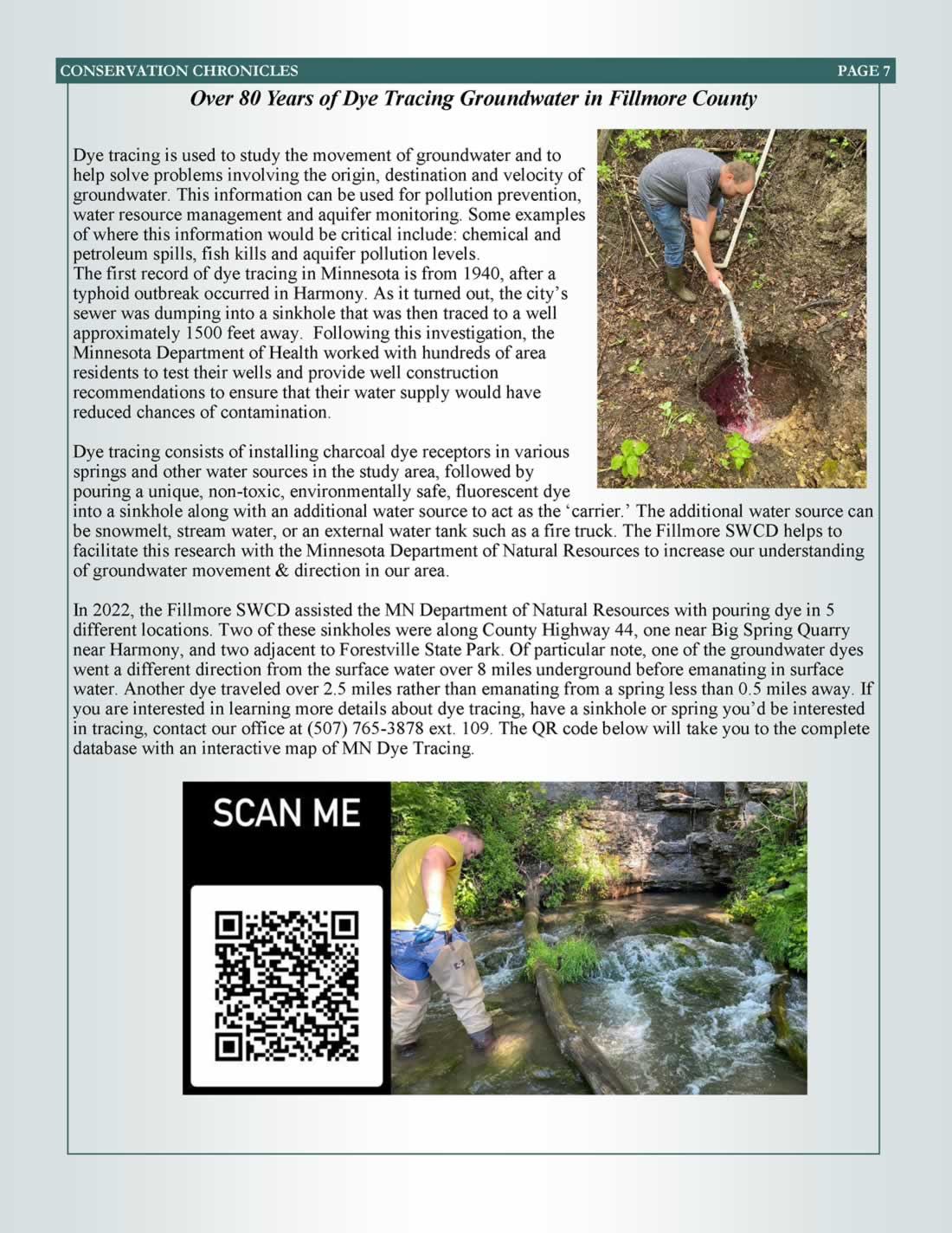
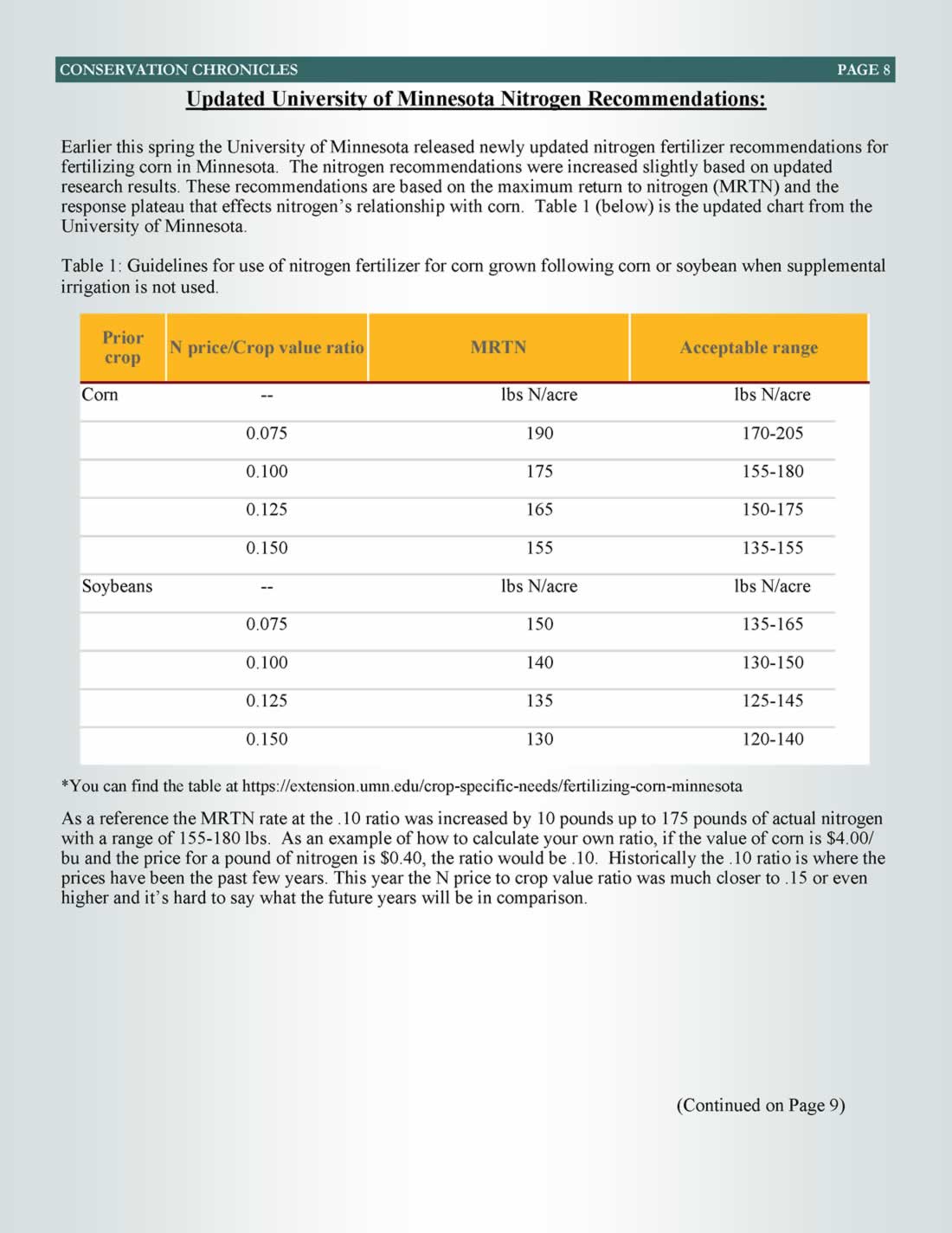
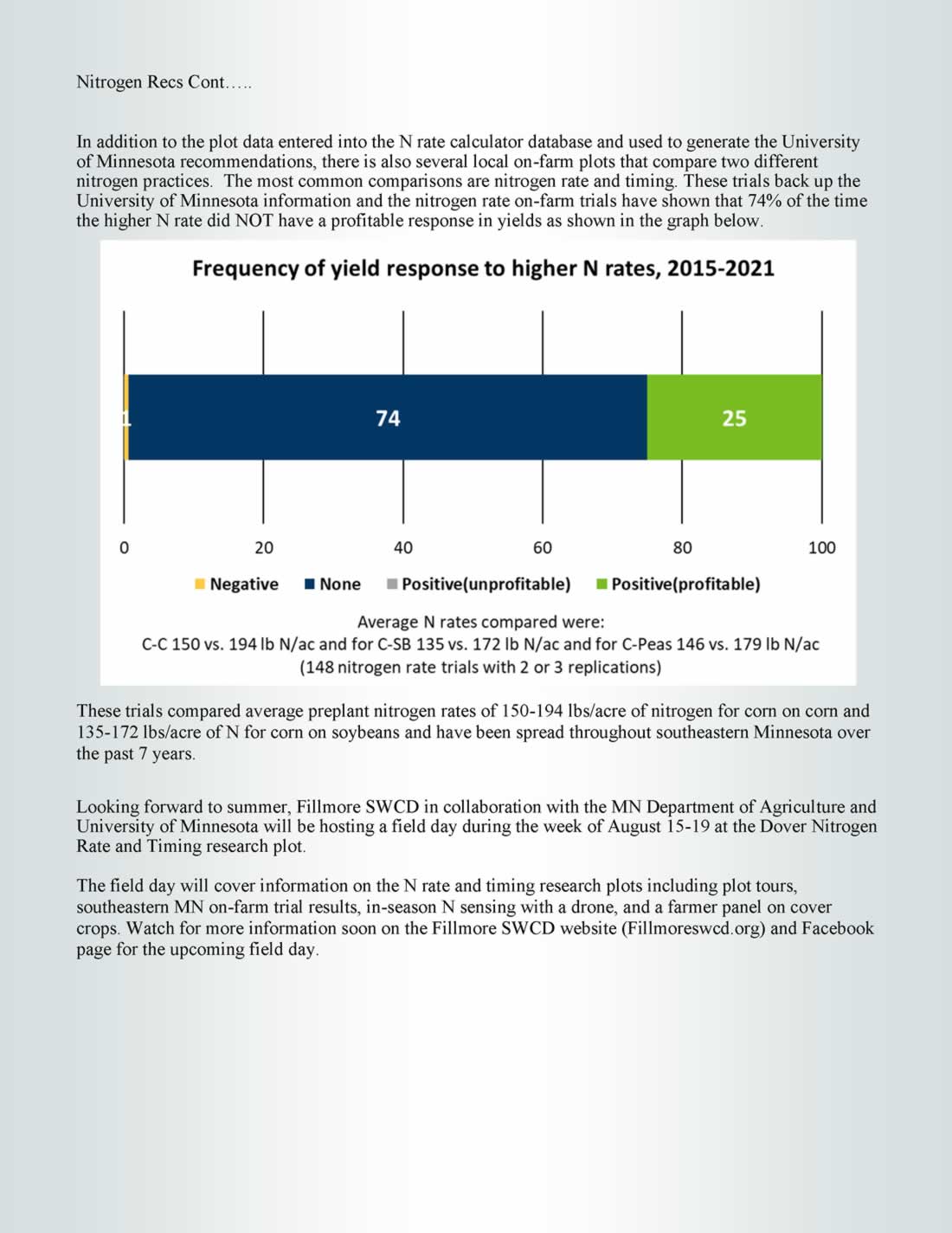
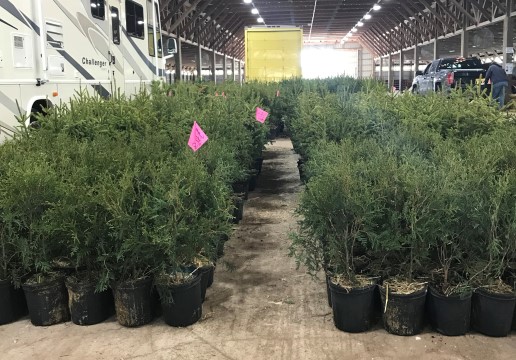 With close to 200 orders received, over 13,000 trees were sold and picked up for planting, making the Fillmore SWCD tree program very successful once again this year.
With close to 200 orders received, over 13,000 trees were sold and picked up for planting, making the Fillmore SWCD tree program very successful once again this year.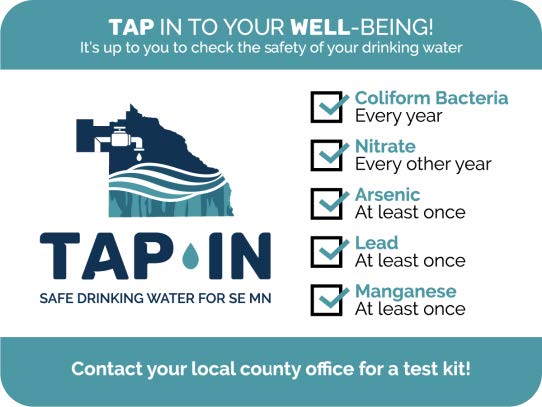 Private well owners in Olmsted, Goodhue, Wabasha, Winona, Fillmore, and Houston Counties are eligible for financial assistance to address drinking water quality concerns in their private wells.
Private well owners in Olmsted, Goodhue, Wabasha, Winona, Fillmore, and Houston Counties are eligible for financial assistance to address drinking water quality concerns in their private wells. 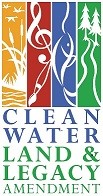 For questions or more information, please contact:
For questions or more information, please contact: